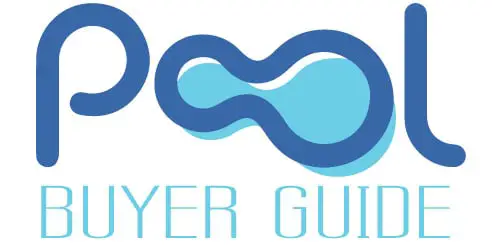
Every pool owners envision their swimming pool to maintain as clear and clean for an all year round swimming activity. Regular and proper maintenance is done with the pool with the help of pool equipment and chemicals to achieve a smooth and comfortable swimming pool use. Even though your pool goes through regular maintenance, there are instances that those are not enough and you need to drastically clean your pool water. That is where pool shocking takes place.
Pool shocking is a cleaning technique to keep your pool water clean and safe by adding more than the regular amount of chlorine to the pool. It is safe to swim once your chlorine levels are around 5 ppm or after 24 hours. It is also known as super chlorinating as it extremely raises the chlorine level in a short period of time, so probably not be done a daily routine. There are only times that pool shocking must be applied as if the swimming pool is not in use or neglect for some time or a big number of swimmers just had a pool party.
Shocking your pool helps to bring back healthy pool water as well as the whole pool environment for the swimmers. But there is a big question coming from the pool owners, that is, after shocking the pool, how long they can use the pool and back in swimming? The pool community has no general answer for that, but there are different convincing factors to help us know when the pool is ready and safe again for swimming after shocking.
Why Do You Need to Shock Your Pool?
Pool Shock is a granular oxidizer, a powdered form of chlorine that is used for pool water treatment. Pools are shocked to remove combined chlorine molecules or the chloramines from the pool water. The pool is treated through shocking to remove excess water waste, bacteria, and visible algae in the water after heavy pool use. Unlike regular pool chemicals, applying them on a regular basis and just within a few hours, you should able to swim. In pool shocking, pool owners use three to five times or even ten times the normal dosage of chemicals for the pool due to serious conditions.
Pool start-up or close-down. When the pool for on its start-up or first time to be used, after the water chemistry is balanced, the pool needs to be shocked to helps oxide particles, clarify water and kill bacteria and algae. In preparation for a long winter and your pool is needed to be close, the pool shock is used to disinfect the water.
Heavy Rain. Rain can affect water chemistry. Rain is pure water that is distilled through evaporation. As it falls through the air, it picks up particles like dust, pollen and algae spores that wash into your pool. These particles affect water pool color and consume so much of your chlorine. During heavy storms, the soil and debris near the pool area can wash to the swimming pool that needed deep cleaning.
Chloramine formation. Chloramine is combined with free chlorine bonded with nitrogen or ammonia. This bond makes the chlorine molecules useless and causes the pool water to smell strongly chlorine and may irritate the swimmer’s eyes. You need to shock the pool to remove chloramines that cannot be removed by regular pool chemicals.
Algae Removal. Using algaecide, algae growth can be controlled but the pool shock completely kills algae and clear the pool. Pool shock is very effective in yellow and black algae or the severe kind of algae.
Overused pool. Recently, your pool party was a blast with so many attendees. With that, your swimming pool becomes contaminated with vomit, urine or feces. Your pool needs a strong pool shocking to restore the quality of your pool.
With the following causes, your pool requires extensive treatment and need more time in swimming pool recovery. It needed a large dose of chemicals to breakdown combined chlorine, organic waste and other contaminants on your pool and reestablish a positive level of free chlorine. For different causes, the chemical levels needed for pool shock vary.
Types of Pool Shock

The type of pool shock you will use to cleanse your pool affects the duration of time you need to wait until you plunge back into the pool. These chemicals help you to bring back a clean and quality pool water. With that, the following can give us the idea of the proper water chemistry levels for optimal swimming pool water quality;
- pH: 7.4 – 7.6
- Chlorine: 1.0 – 3.00 ppm
- Total Alkalinity: 80 – 140 ppm
- Calcium Harness: 200 – 400
- Cyanuric Acid: 25 – 50 ppm
- Total Dissolved Solids: 500 – 5000 ppm
The two most popular types of shocks are shocks with chlorine and shocks without chlorine.
- Calcium Hypochlorite
Cal Hypo is the most economical pool shock you can buy. It has a high level of concentration of active ingredients. Shocks with chlorine take longer interact with your pool and require the use of muriatic acid to keep the pH balance. It takes up to 24 hours of complete pool shocking.
- Dichlor
Another chlorine-based pool shock. It is typically used for pool maintenance because it dissolves very quickly and the pH is almost neutral. Its cost is more than other shocks with chlorine.
Pool shocks with chlorine take up to 24 hours of complete pool shocking. You may consider shocking your pool after the sun goes down to reduce the effect of UV degradation.
Chlorine-free shock oxidizes bacteria and contaminants in your pool without adding other chemicals. Shocks without chlorine contain a high level of pH and will balance both the pH and chlorine levels. It does not make your swimming pool emit an odor and not degrade swimmers’ clothing. With chlorine-free shocks, you can back swimming in just a few hours after the treatment is done.
For the amount of pool shock you will need to use, you just need to know the amount of water in your pool and the severity of the pool problem why it is needed to be shocked. You may double or triple the dosage to address and fix the pool issue.
The non-chlorine shocking method is a lot safer, but using shock with chlorine is more effective in treating your pool.
The Main Question
After shocking your pool, how long do you have to wait until you can swim again?
You may check your swimming pool water quality if it is in proper water chemistry. Ensure if your pool free chlorine levels are holding up. Even if your free chlorine levels are holding, never swim if your pool water is cloudy. If the water clarity prevents you to see the bottom of the pool, refrain using the swimming pool. For safety, a clear swimming pool water prevents someone to submerge into the pool, especially the children.
You can find the exact answer, simply follow the manufacturer’s instructions on the shocking product you will be using. Every chemical manufacturers provide details and direction of use, safety reminders, warnings, and guidelines for storage and disposal.
Your physical inspection, pool water quality testing and following the product instructions are the main factors you should consider before plunging in your newly shock swimming pool. Ensure that the chemicals in the pool are safe for those who are looking to swimming in it. Once the shock is properly applied your swimming pool will be a healthy environment for enjoyment and relaxation. That is why pool shocking is a good practice in pool maintenance especially in keeping your pool clear and clean.

